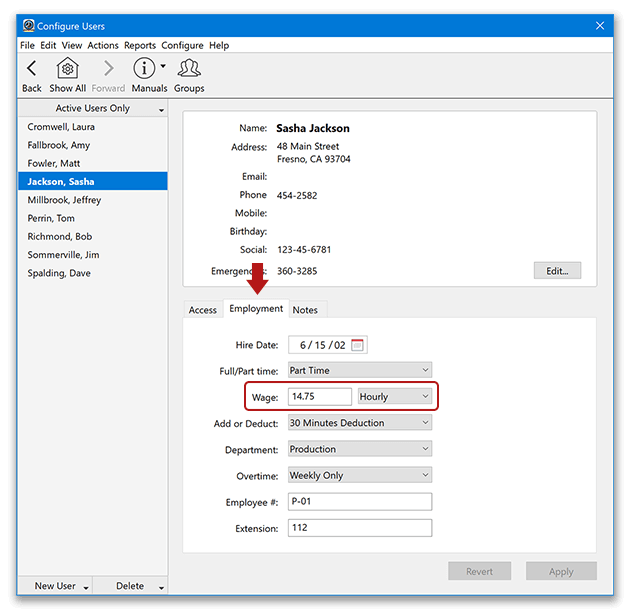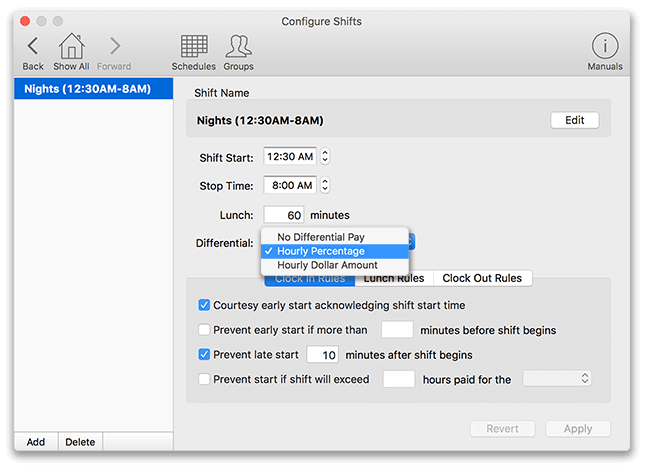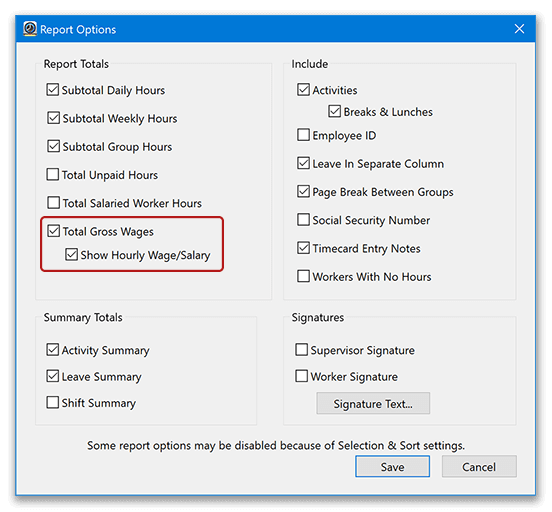Virtual TimeClock Knowledge Base
Calculating & Reporting Gross Wages
Setting up Wage Tracking
To set up gross wage tracking, you will need to enter the salary or hourly wage information for each worker. If an employee's wage is not entered into Virtual TimeClock, then their gross wages will not be included in wage totals for job costing reports.
To enter a worker's wage into Virtual TimeClock:
- Select Turn Administration On from the File menu.
- Select Users from the Configure menu.
- Choose a user in the left column and select the Employment tab.
- For the Wage enter the wage and choose from the popup menu Hourly or Salary.
- Select Apply to save changes.

Salary Worker Labor Burden
Virtual TimeClock can track both salary and hourly worker wages. Virtual TimeClock automatically calculates salary worker's hourly burden by dividing their salary for the period by the average number of hours worked for the period. A salary worker's hourly burden will contribute to gross wage totals on reports. You can adjust the average salary hours by selecting Time Settings from the Configure menu and changing the value for Average hours per week for salaried workers.
Including Shift Differential Pay
If you provide a shift differential for any of your shifts, Virtual TimeClock can automatically calculate the differential and include it in gross wage calculations. To include shift differentials, you will need to Create a Shift, add the differential in the Shift settings and assign the shift to the proper employees.

Reporting Gross Wages
Because of the sensitivity of wage information, worker wages are not included by default on any report. Virtual TimeClock's Report Writer allows you to display gross wages on reports you specifically designate.
To display worker wage totals on a report:
- Select Turn Administration On from the File menu.
- Select Report Writer from the Configure menu.
- Choose a designated report in the left column.
- Select Report Options and click to check the boxes for the wage display options.
- Total Gross Wages: Total and display the gross wages at the bottom of the report.
- Show Hourly Wage/ Salary: This option will display a user's wage on the Timecard Detail or Timecard Summary report.
- If either option is grayed out, wages cannot be included on this type of report.
- Select Save to apply changes to the report.
- Repeat steps 3-5 for each report that you want wages displayed on.

Exporting Wage Information
Virtual TimeClock allows you to easily export hours, overtime and wage data for further analysis in your favorite spreadsheet program. To export data from Virtual TimeClock:
- Select Turn Administration On from the File menu.
- Select the Export icon in the administrative toolbar.
- Select Export Type and choose the report.
- Select Setup and click Select to choose which fields you want exported. You can decide which fields are exported and the order they are listed.